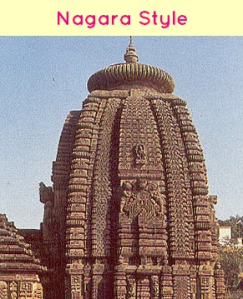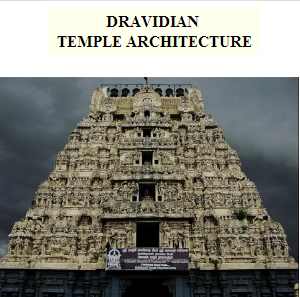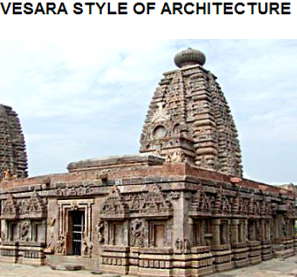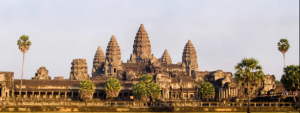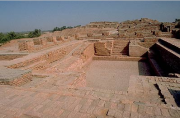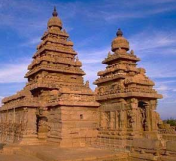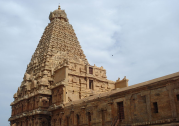Every Hindu Temple in India will have something special about itself, a myth or a legend surrounding it. If if doesn’t, it wont be long before some sadhu or a devotee will weave a backstory to make it special; story telling is as ubiquitous as temples in India. It is difficult therefore to bring to any table an irrefutable list of the most famous temples. What we can do instead, is draw a list of a few, on the basis of their nation wide appeal.
1. Somnath Temple
The Somnath temple,Gujarat, is a temple that houses the Jyotirlinga, and is dedicated to Shiva. The Jyotirlinga is a column of light, the indivisible reality out of which Shiva appears. Nobody knows when this temple was built but by 725 CE, when an invasion from Sindh took place, the temple was already there at the present site. The original structure has undergone many changes, but the architecture, in general, remains intact. It is important, both religiously and historically.
2. The Sun Temple of Konark, Odissa, is dedicated to Suryadeva and was built in CE 1250. This is one of finest examples of ancient Indian temple architecture and is listed today as a UNESCO World Heritage Site. The whole architecture reflects the grandeur of the Sun and is chock-a-block with intricate carvings. Artistically and technically this represents skill of the highest order and the highest achievement in religious architecture of the Eastern Ganga Dynasty. Worship has ceased in the temple but it still attracts thousands of devotees every year.
3. Brihadeeswara Temple
The granary of South India, Thanjavur was the royal city of the Nayaks, the Mahrattas and earlier the Later Cholas and is the home of the Brihadeeswara Temple built by the Chola Emperor, Rajaraja I. Completed in 1010 CE, this temple was historic in many respects. Dedicated to Lord Shiva, this temple was the first temple in India, built entirely of granite, one of the hardest stones in the world, in quantities sufficient to fill the Great Pyramid of Giza.
The Brihadeeswara Temple was 10 times taller than any other building in India at that time and it’s capstone consists of two granite stones of 40 tons each, raised 216 feet in the air. One of the architectural marvels of the ancient world. Known for its exquisite handicrafts, bronzes and south Indian musical instruments, Thanjavur is also famous for its distinctive art style. A couple of million tourists visit Thanjavur every year.
4. Khajuraho Temple
The Khajuraho group of temples dedicated to deities like Brahma, Shiva, Surya, Vishnu and others, were built by the Chandela Kings between 950 and 1150 CE. Located in Madhya Pradesh, these temples today are famous for their inclusion of erotic sculptures in their architecture. It is believed that young students, staying at the complex, during their Brhamacharya phase of life, were taught how to lead a more balanced Grahastya, through these erotic sculptures. It is akin to the Hindu approach of making oneself invulnerable to ‘bhoga’ by being exposed to it in a controlled manner. Khajuraho temples remain the best example of this line of thought and are actually one of the few standing sculptures of this kind, in India.
Worship has ceased at the Khajuraho but every year people flock to the temple in large numbers during the Khajuraho festival in February.
5. The Kashi Vishwanath temple, one of the holiest Dhams is dedicated to Shiva and was built by Ahilyabai Holkar in 1780 AD. The temple, every year, sees a massive number of devotees who come to worship and to wash away their sins in one of the Ganga Ghats. The Kashi Vishwanath temple houses a Jyotirlinga and plays a nodal role in the Hindu birth and death cycle. To have one’s ashes immersed in the Ganges and within the Ghats complex, is considered highly blessed. Many travel to Kashi Vishwanath also as a part of the Dham circuit, touching all the four Dhams. It is also one of oldest temples in India, that conducts daily worship services, with the first aarti starting as early as 3AM in the morning.
6. The Tirupati Venkateswara Temple, arguably the most famous temple of the Deccan, is a Vaishnavite temple, located on a hill in Tirupathi, Andhra Pradesh. Considered the richest pilgrimage centre, the Tirupathi Balaji temple attracts devotees from all over the world. Devotees walk up the hill by foot for penance, as a pariharam, taking special vows or just to prepare themselves before eventually seeing Lord Balaji at the inner sanctum. The walk is as famous as the perambulation at the Tirupathi temple but transport up to the top is also available. The number of people coming to worship at the temple, have always been in lakhs, everyday, at every time of the year. King Krishnadeva Raya is said to have contributed to the building of this temple but its origins go back to times even earlier. It is in definitive Dravidian Style and though primarily a Vaishnavite temple it attracts just about any one from the Hindu faith.
7. The Kamakhya Temple, located in Assam, is unmatched in its popularity as the oldest of the Shakti Pithas and the ultimate seat of Tantric worship. Primarily dedicated to Kamakhya, the various individual temples within the complex are dedicated to Bhuvaneshvari, Bagalamukhi, Chinnamasta, Tripurasundari, Tara, Kali, Bhairavi, Dhumavati, Matangi and Kamala.
Though it is unclear as to who built it and when it was built, there is evidence of this temple existing even as early as the 9th century. Built in the Nagara style, but with ample Assamese architectural influence, the Kamakhya complex, in terms of design, is most unlike any other Hindu temple when seen from the outside. The annual Ambubachi Mela is the most famous events at the Kamakhya, that sees mendicants, tantrics and devotees gather in large numbers at the complex.
8. The Vaishno Devi Temple, located in Katra, Jammu, is a very popular temple with the people of the north, who every year trek up the mountain in penance, for blessings for good health and general protection. Dedicated to ma Vaishno Devi, also known as Mata Rani and Vaishnavi, the temple is a Shakti temple and houses the female Goddess in its Garbhagraha. The trek up the mountain is very much a part of the Vaishno Devi experience and it begins with a period of purification and abstinence, often starting months in advance. About 8 million devotees each year visit this temple, making it the second largest gathering of devotees. Many miracles have been attributed to this temple and this continues to be a very popular religious site notwithstanding the arduous trek.
9. The Kedarnath Temple, located in the Garhwal Himalyan range, stands at an altitude of 11,755 ft and is dedicated to Kedar or Lord Shiva. This visually spectacular stone structure’s origin still baffles historians, as it marks its presence against the stark mountainscape, attracting reclusive sadhus, devotees and travelers from all over India.
Legend has it that Lord Shiva having made only the highest parts of the Himalayas his abode, frequents the four Dhams more often than any other place; the four Dhams being– Kedarnath, Badrinath, Yamunotri and Gangotri. With no direct road direct access the temple can be reached only by a 14km uphill trek from Gaurikund. The shrine is closed on the first day of the Kartik (Oct-Nov) month and the holy statue of Lord Shiva is carried down to Ukhimath where it is worshipped. After the passing of winter, the statue is reinstated at Kedarnath in Vaishakh (Apr-May) month and the doors of the temple are thrown open to pilgrims.
10. The Sai Baba Temple in Shirdi, Maharashtra built over the samadhi or the final resting place of the saint, Sai Baba in Shirdi though less than a century old has become one of the most important pilgrimage centres in India with an average of about 25,000 devotees visiting the temple everday; this number goes up to 1,00,000 devotees on important festival days. The Shirdi Sai Baba’s samadhi attracts worshipers from all over the world and not just India.
WHAT IS AGAMA SHASTRA AND ITS ROLE IN TEMPLE WORSHIP
0
Hinduism
Hinduism, the ancient Indian religious system, is arguably one of the most complex of known religions and its complexity has become one of its many characteristics.
Unlike most religions that base their faith on one definitive set of guidelines and rules, Hinduism does on confine itself to a single text, or a single interpretation or a single approach—which is also why it is so vibrant and rich. Given this heterogeneous character, rules, regulation, norms and guidelines of the Hindu way of worship, spirituality and all other aspects of the religion, have to be seen, always, in a larger context.
Agama Shastra
Agama Shastra, a collection of ideas that lays down the rules for worship, temple building, spirituality and rituals, has for long been a guideline for many people of the Hindu faith. It is a collection of Sanskrit, Tamil and Grantha scriptures that contains, mainly, methods of temple construction, idol creation, philosophical doctrines and meditative practices. As a compendium of sorts that came into being after years of assimilation and from a variety of sources, the Agama shastra as a whole cannot be dated; some parts of it being pre vedic while the others are post vedic.
Role of Agama Shastra in Temples Construction and Worship
 As the complete guide, Agama Shastra plays a very important role in consecration and construction of holy places; most Hindu places of worship follow the tenets of the Agama Shastra.
As the complete guide, Agama Shastra plays a very important role in consecration and construction of holy places; most Hindu places of worship follow the tenets of the Agama Shastra.
The Four Padas
While the Agama are many in number, each of them consists of four parts: Kriya Pada, Charya Pada, Yoga Pada and Jnana Pada. While Kriya Pada expounds more tangible rules– rules of construction, sculpting, carving consecration of Idols etc. the Jnana Pada deals with something more lofty, the philosophy and spirituality of temple worship.
Temples and places of worship cannot be built arbitrarily or on the strength of some local notion, for everything is laid down categorically in the Agama shastra. For example, for a pilgrimage the three essentials are Sthala, Tirtha and Murthy, where the Sthala refers to the place of the temple, the Tirtha signifies the temple tank and Murthy stands for the idol. There are rules in the Agama Shastra for just about every aspect, including the smallest detail, from the positioning of the holy figurine to the materials from which the temple is to be constructed.
Unlike the Vedic guidelines, that focus more on Havan Building, Agama Shastra dwells at length on idols and figurines of the deities. It dwells in such detail that it is in places almost like a scientific blue print for temple making.
Given how temples in India are spread, over a vast territorial space, it is amazing how Agama Shastra is employed and followed throughout the majority of these temples, notwithstanding the cultural and regional differences; perhaps, there is something divine about the Agama Shastra.
WHY SHOULD WE GO TO TEMPLE FOR WORSHIP
Why should We go To temple for worship as per Hinduism
 It is estimated that every Friday, around 25,000 devotees come to worship at the Madurai Meenakshi Temple. This figure while it may seem phenomenal to the uninitiated, is only reflective of the general belief about temple worship that most Hindus have. Everywhere, in India and abroad, wherever there is a sizeable Indian population/diaspora, going to temple to worship is and has always been a big event; many even prepare for it.
It is estimated that every Friday, around 25,000 devotees come to worship at the Madurai Meenakshi Temple. This figure while it may seem phenomenal to the uninitiated, is only reflective of the general belief about temple worship that most Hindus have. Everywhere, in India and abroad, wherever there is a sizeable Indian population/diaspora, going to temple to worship is and has always been a big event; many even prepare for it.
So why do Hindus go to temples in such large numbers and that too so frequently?
While it is difficult to enumerate all available reasons for going to a temple, we can of course focus on three basic reasons for which every Hindu at one point or the other would have gone to a temple.
3 Basic Reasons for going to Temple for Worship
Divine Energy generated from Deity in the Temple
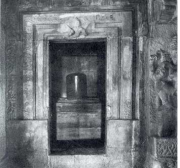 First and foremost, the Hindu temple is, according to the Hindu belief, a site of the divine. Located strategically and built for a particular deity, the temple houses the divine energy of that particular deity in its optimum state. The location, the architecture, and the temple’s connection with the planetary systems, all come together, in the best possible alignment for the maximum possible benefit. So a devotee worshiping at the temple stands to gain more than if he or she were worshiping at home. This is also the reason why Temples have more crowds on particular days, days that are marked for particular deities.
First and foremost, the Hindu temple is, according to the Hindu belief, a site of the divine. Located strategically and built for a particular deity, the temple houses the divine energy of that particular deity in its optimum state. The location, the architecture, and the temple’s connection with the planetary systems, all come together, in the best possible alignment for the maximum possible benefit. So a devotee worshiping at the temple stands to gain more than if he or she were worshiping at home. This is also the reason why Temples have more crowds on particular days, days that are marked for particular deities.
Pariharam or Doshas
 The second important reason, is a more selfish reason, is to visit temples for the Pariharam or the Doshas. According to Hindu belief, every person born is under the influence of planets and for some, the unlucky ones, this influence can be more pronounced. The planetary influence, good or bad, can be therefore either utilized or countered by visiting temples and performing set Pariharam rituals. A large proportion of the temple goers in India, belong to this category.
The second important reason, is a more selfish reason, is to visit temples for the Pariharam or the Doshas. According to Hindu belief, every person born is under the influence of planets and for some, the unlucky ones, this influence can be more pronounced. The planetary influence, good or bad, can be therefore either utilized or countered by visiting temples and performing set Pariharam rituals. A large proportion of the temple goers in India, belong to this category.
Spirituality
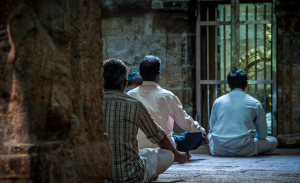 The last but not unimportant reason is a more rational one. Many who visit temples to worship are not necessarily religious, they are instead spiritual. The Kashi Vishwanath temple is a case in point, where people from all over the world come flocking; they come more for spiritual reasons than for religious reasons. It is believed that the ambience at these temples, the sounds, the sights, the smells– the cymbals, the vision of the deity, the incense– all add to the environment, creating a considerable impact on the senses of the devotee, taking them to a state of altered consciousness, wherein communion with the divine becomes easier.
The last but not unimportant reason is a more rational one. Many who visit temples to worship are not necessarily religious, they are instead spiritual. The Kashi Vishwanath temple is a case in point, where people from all over the world come flocking; they come more for spiritual reasons than for religious reasons. It is believed that the ambience at these temples, the sounds, the sights, the smells– the cymbals, the vision of the deity, the incense– all add to the environment, creating a considerable impact on the senses of the devotee, taking them to a state of altered consciousness, wherein communion with the divine becomes easier.
These three main reasons aside, there can be a plethora of personal reason for us to worship at our favourite temples and not all of them will fall within the domain of the explicable– As the saying goes, to each his own.
ARCHITECTURE OF HINDU TEMPLES
Although there are numerous regional variants of the architecture of the Hindu temple, they can basically be classifed under the Nagara or the north indian and the Dravida or the south indian styles. We will briefly examine aspects of these styles (as explained in ancient texts like the Mayamata, Tantrasamuchchaya and Suprabhedagama) and their commonalities.
Nagara Style
The Nagara style is characterized by a beehive shaped tower (called a shikhara) made up of layer upon layer of architectural elements such as kapotas and gavaksas, all topped by a large round cushion-like element called an amalaka. The plan is based on a square but the walls are sometimes so broken up that the tower often gives the impression of being circular. The central shaft could be surrounded by smaller secondary shafts called the Urushringas, creating a spectacular visual effect resembling a fountain.
Dravida Style
The Dravida Style is characterized by a pyramid shaped tower consisting of progressively smaller storeys of small pavilions, a narrow throat and a dome on the top called the Sikharam or the Vimanam. The repeated storeys give a horizontal visual thrust to this style.
Vesara Style
This is the name given to an architectural style that evolved in Karnataka during the medieval centuries and combined both the Nagara and the Dravida styles. This style reduces the height of the individual tiers without reducing their number resulting in a reduction in the height of the temple towers. The semi-circular structures of the Buddhist Chaityas are also incorporated in some of the temples of this style. The temples of Halebid, Belur, Somnathapura and Pattadakal are some of the examples of this style.
Commonalities
Hindu philosophical and metaphysical concepts dominate the architecture of the temple whatever it’s style. The basic layout of a temple can be visualized as a Mandala, a miniature representation of the cosmos. The Mandala is a mystical Hindu symbol represented by a square enclosing a circle.
The square denotes not just the four directions but also a perfection of form and symmetry making it de rigueur for temple architecture. The Mandala is subdivided into a grid of smaller squares; 64 and 81 are the most commonly used. Each square is invested metaphysically with a resident deity. Each component of the temple is then sited on a particular square. A Mandala that forms the basis for a temple’s layout is termed a Vasthupurusha Mandala.
A temple usually consists of the following parts: the Garbhagraha (or the Sanctum Sanctorum) containing the diety, the Vimana/Shikhara, the tower rising over the Sanctum, the Mandapa in front of the Sanctum, the Prakaras around the Sanctum and the Gopura, the gateway(s) to the temple.
The layout of a temple can also be analogous to the human body. The vimana is the head, the Sanctum is the neck, the front mandapa is the stomach, the prakara walls are the legs, the gopura is the feet and the Lord in the Sanctum is the Soul or the Jiva of the body.
Foreign Architectural Styles
The famous Angkor Wat of Cambodia, the largest Hindu temple in the world, is a combination of Dravida and Khmer styles of architecture while the massive Prambanan temple complex of Java, Indonesia follows the Mandala precepts of Vasthu Sastra while it’s soaring spires are reminiscent of the Nagara Shikharas.
ANCIENT HINDU TEMPLES
Some of the earliest Hindu religious structures have not survived the ravages of time and man. But as temples began to be constructed of more durable materials like brick and stone, their longevity increased and we are now not only able to understand how our ancestors worshipped their gods but are also able to view their skill in shaping these religious structures.
Ancient Hindu Temples
We will examine a few notable ancient Hindu temples/structures existing to this day:
The Great Bath, Mohenjodaro*
A public water tank of the Indus Valley Civilization, the Great Bath is postulated to be part of a religious structure, presumably Hindu. Although there is no concrete evidence for any of these suppositions, it is probable that the Great Bath could be a precursor to temple tanks where devotees ritually purify themselves before they enter the sanctified premises.
Mahabalipuram*
Built by the Pallava rulers between the 7th and 9th centuries CE, the rock cut, monolithic and structural temples of Mamallapuram (modern Mahabalipuram), the port city of the Pallavas, including the famous Shore Temple made of dressed stone, form one of the earliest known existing Hindu religious structures in India.
Ellora Caves*
Carved out of the mountain face, the Ellora “cave” complex actually consist of both temples and monasteries belonging to Hindu, Buddhist and Jain faiths (with some of the Hindu “caves” being the earliest) constructed between the 6th and the 9th centuries CE by the Kalachuri, Chalukya and Rashtrakuta dynasties.
Kanchipuram
Kanchipuram, the former capital of the Pallavas, the “City of Thousand Temples” houses numerous ancient Hindu temples that make it an important pilgrimage point for both Shaivites and Vaishnavaites, the two major Hindu denominations today. The Varadharaja Perumal, the Ekambareswarar and the Kamakshi Amman Temples here are more than a millenium old.
Brihadeeswara Temple*
Built a thousand years ago, the Brihadeeswara Temple at Tanjavur, built by the Emperor Raja Raja Chola was historic in many respects. Dedicated to Lord Shiva, this temple was the first temple in India built entirely of granite, one of the hardest stones in the world, in quantities sufficient to fill the Great Pyramid of Giza. Large enough to hold 10 Taj Mahals, the Brihadeeswara Temple was 10 times taller than any other building in India at that time and it’s capstone consists of two granite stones of 40 tons each, raised 216 feet in the air. A religious and engineering marvel.
Indian temples and Hindu Motifs are not confined to the geographical boundaries of India alone; regular trade and political interaction led to the spreading of indian influence across the sub continent. Angkor Wat* is probaly the worlds most famous Hindu edifice and the largest religious structure of its kind. The temple is a classic case of Indian Hindu sensibility being combined with local regional aesthetics– Khmer temple architecture with Dravidian temple style. The temple’s dedication to Vishu can be made out in the temple’s departure from the conventional orientation; it faces west while all others conventionally face east.
IMPORTANCE OF TEMPLE IN HINDUISM
A Hindu temple is believed to be the earthly seat of a god or the deity and hence embodies divinity. Man likes to grasp the infinite in some concrete form. This explains why temples have come into existence. Hindus believe that a temple is a place where god may be approached, where divinity may be experienced and where divine knowledge may be discovered.
Importance of Temple in Hinduism
Historically, temples have served several purposes, some of which are listed below:
- A temple well sited and built in accordance with the Shastras can define a place. Tirupathi, for instance, has come to be defined by the presence of the Venkateswara temple. Kanchipuram in the south and Kashi in the north are places famous for the presence of several important temples.
- A temple that can attract pilgrims in significant numbers can contribute considerably to the economy of that village or town. A temple that can attract pilgrims throughout the year has an even more significant impact, economically and culturally on the place of it’s siting.
- A temple also demonstrates the wealth, status and piety of the personage who commissioned it. The more ornate the temple, the greater the wealth and the power of the builder. Personages belonging to the royalty, the nobility or the cream of the mercantile class were the ones who usually commissioned temples.
- They not only had to pay for the construction of the temple but also for it’s maintenace. They did this by giving grants of large tracts of land, the produce of which went to the upkeep of the temple and also by contributing sums of money, livestock and quantities of jewels or precious metals. Temple inscriptions and Sthala Puranas attest to this.
- The Mandapas or the halls of the temple were/are places where people gather(ed) for social and cultural intercourse.
- The temples also helped fulfill public utility functions. For instance, the temple tank served as a reservoir of water which could be used by the public. The tank also helped store rainwater and replenish water aquifers around the temple area, benefiting all those who had laid wells in that area.
- Temples also served as centres of art and culture. Even the building of a temple with it’s ornamented pillars, walls and roof, it’s murals and frescoes and other adornments like sculptures and jewelled elements required a large number of skilled artists and artisans of different categories and made it a treasure house of art.
The performing arts including traditional dance and music also found a permanent home in and around major temples. In fact the tradition of devadasis or temple dancers and classical music and composition owes much to religion and the institution of the temple.

